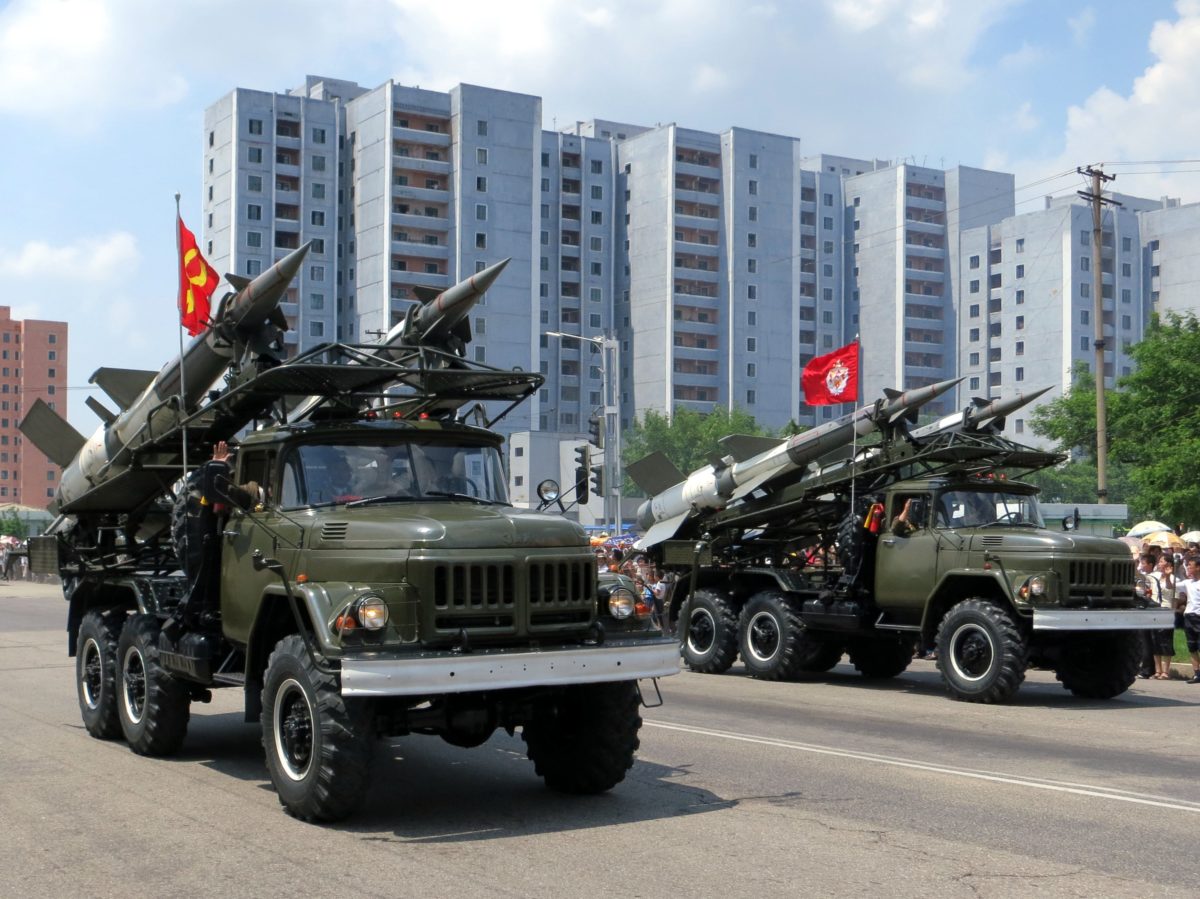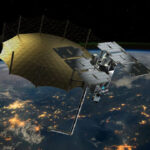Wednesday, August 9th 2017 (WASHINGTON) – According to Secretary of State Rex Tillerson, President Donald Trump’s threat of “fire and fury” sent a clear message to North Korea’s leader Kim Jong-Un in language he would understand, but it has also left many in the United States and abroad questioning where the fiery rhetoric between Washington and Pyongyang will lead.
PERMANENT LINK: foxbaltimore.com/news/
“What the president is doing is sending a strong message to North Korea in language that Kim Jong-un can understand, because he doesn’t seem to understand diplomatic language,” Tillerson continued, saying the message further demonstrated America’s “unquestionable ability to defend itself … and its allies.”
Over the past 36 hours President Trump has issued a series of warnings to Pyongyang that have left many waiting and wondering how the rhetoric might impact international security, if the president just drew a red line, and whether there was a nuclear dimension to the president’s warning.
Early on Wednesday morning, Trump gave some indication of what was on his mind as he took to Twitter to stress his commitment to modernizing America’s nuclear arsenal.
On Wednesday Sinclair Broadcast Group spoke to White House national security aide Sebastian Gorka and asked him to clarify the meaning of the president’s recent remarks on North Korea.
“Let’s allow Pyongyang to interpret that,” Gorka said. “We don’t give our game plan away.”
He continued to explain that Trump’s message was “pretty self-evident” and means “if you threaten us we will take action.”
“It was a very simple message,” Gorka added, “do not test this administration. Do not test this White House.”
According to senior defense strategist at the Center for Strategic and International Studies Anthony Cordesman, the president’s message is anything but clear. “It’s vague and it’s uncertain. It’s not a declared statement that the U.S. will do something if there’s another missile or nuclear test, but it certainly implied it.”
Whether Trump’s posture toward North Korea will result in a positive or negative outcome, is anyone’s guess, Cordesman said. “But what it does with absolutely clarity is add a lot of uncertainty as to U.S. intentions. To some extent that can be a good thing, except we can’t predict the reaction of virtually any of the parties involved.”
In the hours after Trump’s statement, the North Korean regime responded announcing it was “carefully examining” military plans to strike the U.S. territory of Guam, which hosts thousands of U.S. troops at the Anderson Air Force Base and the Naval Base Guam.
While the regime has made similar threats in the past, the latest exchange occurs in the context of a series of North Korean provocations, starting with two nuclear tests in 2016, followed by dozens of ballistic missile tests in 2017 and two successful launches of an intercontinental ballistic missile (ICBM) in July.
The Trump administration has met the provocations by demonstrating America’s strategic capabilities, flying B-1 bombers over the Peninsula, testing ballistic missile defense systems and test-firing a number of unarmed ICBMs. The U.S. has also increased the pace of military exercises with its Asia Pacific allies.
Trump’s statement that Kim Jong-Un would face “fire and fury like the world has never seen,” followed reports attributed to U.S. intelligence sources that North Korea had developed the capability to miniaturize a nuclear warhead that could be deployed on an ICBM. Based on the July ICBM tests, such weapons would be capable of striking U.S. targets as far east as Chicago.
See a complete timeline of escalating tensions with North Korea:
According to the Trump administration, the U.S. outlook on North Korea is one that is shared by the international community, evidenced by the United Nations Security Counsel’s (UNSC) unanimous approval of a tough new package of economic sanctions against the regime.
State Department spokesperson Heather Nauert underscored that both within the U.S. government and within the international community, “We are speaking with one voice.”
In a written statement, Secretary of Defense James Mattis pointed to the diplomatic actions against North Korea, advising Kim Jong-Un to “take heed” of the UNSC’s “unified voice” and “cease any consideration of actions that would lead to the end of its regime and the destruction of its people.”
Mattis affirmed the strength and precision of U.S. and allied military capabilities, saying the North would “lose any arms race or conflict it initiates.”
The Defense Secretary’s statement is fully in line with the policy of previous administrations who have used the threat of military force to assure allies and remind North Korea that the United States will defend itself and its partners in the region. Whether it will translate into action under the current administration remains a question.
Already Trump has demonstrated his willingness to use force in ordering the cruise missile strike in Syria in April and the MOAB bombing of Taliban positions in Afghanistan in May.
“This isn’t an administration that just talks,” Gorka said.
So far the response from U.S. allies and North Korea’s neighbors has been to seek additional resources to defend their country.
On Wednesday, South Korean President Moon Jae-in met with the country’s military leaders to urge a “complete defense reform” to address the threat from the North.
“I believe another task now facing us is the urgent task of securing defense capabilities to counter North Korea’s nuclear and missile provocations,” Moon said.
According to North Korean state media, Kim Jung-Un’s military chief issued a statement threatening to turn South Korea into “a sea of fire.”
In light of the increased sophistication of North Korea’s missile program, President Moon recently decided to move ahead with controversial plans to field a U.S. anti-missile system in the country. The Terminal High Altitude Area Defense (THAAD) system is a proven, effective missile defense system capable of intercepting short and medium-range missiles.
Some of the country’s most conservative lawmakers have gone so far as to suggest the redeployment of U.S. tactical nuclear weapons in South Korea. Those weapons were removed in 1991 as a way to encourage Pyongyang to enter negotiations. The United States has not signaled any intent to reintroduce its own nuclear weapons on the Korean Peninsula.
In Japan, the country spent Wednesday honoring the 72nd anniversary of the U.S. bombing of Nagasaki, the second time a nuclear weapon was used during war.
The North Korean nuclear threat and Trump’s campaign statements about possibly not defending U.S. allies who didn’t pay their way, has added fuel to Japan’s ongoing debate over enhancing its defense capabilities. The Japanese military has been strictly defensive and prohibits acts of belligerence under the country’s post-World War II constitution.
Prime Minister Shinzo Abe reshuffled his cabinet and appointed Itsunori Onodera as the new defense minister on August 3. Onodera has advocated for increasing defense spending to 2 percent of GDP and allowing Japan to develop the capabilities to strike North Korean sites, if the country is threatened.
China has presented a steady hand in the midst of the rhetorical firestorm, urging calm on all sides. But China’s vote to sanction North Korea last weekend has also been read as a sign that Beijing may be running out of patience with the North.
“North Korea’s actions don’t just affect the Korean Peninsula,” Cordesman explained. “Everything that happens here affects China’s perception of a regional balance in northeast Asia.”
A serious Japanese rearmament, even if it is aimed at North Korea, would directly impact China, so would a decision in Seoul to increase missile defense or obtain longer-range missiles.
The threat of this kind of re-balance in the Pacific “could be a good thing,” Cordesman explained. It could lead China to seriously pressure North Korea and help bring about a diplomatic solution.
“But it also could create a situation where you have a much broader arms race. And since it is centered around missiles and nuclear weapons, it is probably the worse kind of arms race.”






